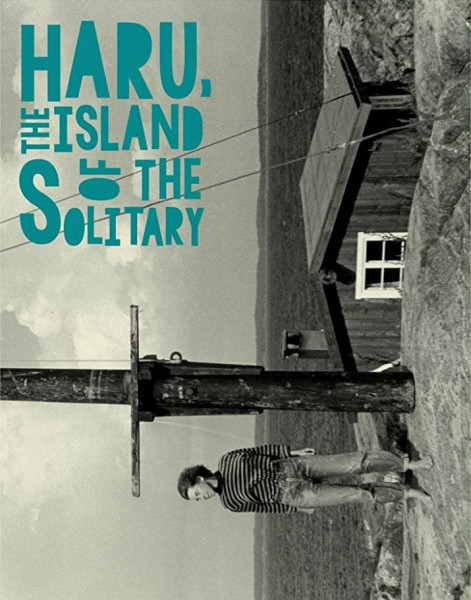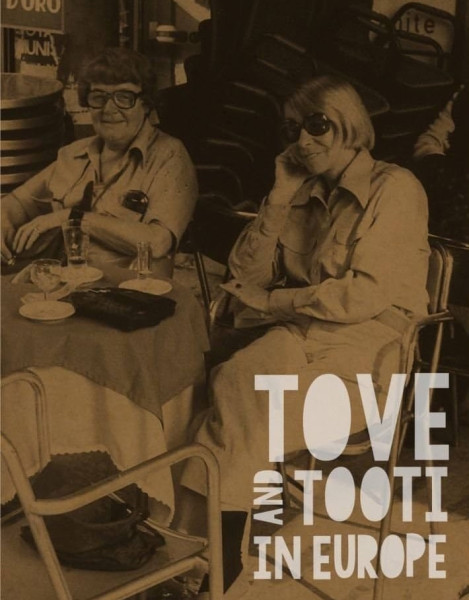Tove Jansson, the creator of the Moomins, takes us to her island in the Finnish Sea and then carries us further through old Europe. An intimate journey through love, the sea, and small moments of joy.
“It’s strange how the sea is always different, always changing. That’s what I love about it — it’s never boring.”
Tove Jansson
HARU, THE ISLAND OF THE SOLITARY
KANERVA CEDERSTRÖM & RIIKA TANNER — FI, 1998 – video – 43’
TOVE AND TOOTI IN EUROPE
KANERVA CEDERSTRÖM & RIIKA TANNER – FI, 2004 – video – 58’


| 07/11 | 20:00 | Projectvierennegentig | Ostend |
Tove Jansson, the beloved Finnish-Swedish writer and artist – best known as the creator of the Moomins, the charming Nordic trolls from Moominvalley – also had a lesser-known passion: home movies. Between 1970 and 1991, she captured intimate, joyful moments of her life with her partner, artist Tuulikki Pietilä, on Super 8 film.
Haru, the Island of the Solitary was filmed on the rocky islet of Klovharun, a small island in the Pellinki archipelago in the Gulf of Finland. There, in the only cottage on the island where Tove Jansson and Tuulikki Pietilä spent their summers, an intimate portrait of Jansson’s world unfolds. Based on twenty hours of material, Kanerva Cederström created a poetic meditation on nature, love, and the quiet strength of two women who found freedom and inspiration in each other and in the sea. The candid, often revealing voice-over commentary was written by Tove Jansson herself.
In Tove and Tooti in Europe, Tove Jansson and Tuulikki Pietilä take us along on their travels through Europe between 1972 and 1993. The film is a lyrical and playfully humorous essay on ‘old Europe’: a time when people still wandered through streets and landscapes, shared a joke, paused to look, or let themselves be carried away by a quiet moment. Filmed on Super 8 mm, it unfolds as an intimate journey full of light, tender observations, across Paris and Venice, London and Madrid, Dublin, Iceland, Ireland, and Corsica.
Tove Jansson (1914–2001) was a Finnish writer, artist, and cartoonist of Swedish-speaking background. She became world-famous as the creator of the Moomins, a series of children’s books about imaginative creatures that explore philosophical themes. In addition to her work as an author, she also wrote novels for adults and painted.
The Moomin books, published between 1945 and 1970, have been translated into dozens of languages and are beloved by both children and adults. Tove Jansson was also openly lesbian at a time when this was far from common, and she spent most of her life with her partner Tuulikki Pietilä. She passed away in 2001, but her work continues to have a worldwide influence.
~ ~ ~
With the support of Vlaams Audiovisueel Fonds and KAAP.
With thanks to Kanerva Cederström and Moomin.
SUPPORT — We currently work without subsidies, so your support is more than welcome and literally brings light to the screen:
BE80 7340 4532 5277 BIC: KREDBEBB
Payment reference: ‘Gift’.
Gifts above the sum of € 40 are tax deductible.
A gift of € 100 will only cost you € 55.
Artistic coordination: Anouk De Clercq, Godart Bakkers
General coordination: Ditte Claus
Artistic team: Eric de Kuyper, Xavier Garcia Bardon
Production team: Bob Mees, Jef Declercq, Johan Opstaele, Noah Heylen
Communication: Cynthia Vandenbruaene
Graphic design: Michaël Bussaer. Webdesign: Dominique Callewaert.
With the support of Auguste Orts, CINEMATEK, KAAP, KASK School of Arts Gent, Onderzoeksfonds Universiteit Gent, Vlaams Audiovisueel Fonds.

Whoever walks in Ostend today is confronted with a fantastic eclecticism: a brutal grey apartment block exists next to the glorious Thermae Palace. The mighty, almost Stalinist, building of De Grote Post dominates the Hendrik Serruyslaan. A former department store houses a museum for contemporary art. Belle-époque houses are hidden in the quiet but stately streets.
In 2017, one void struck artist Anouk De Clercq: that glorious film culture of Henri Storck, James Ensor or Raoul Servais had disappeared from the streets. With the closure of the Rialto cinema, the last independent cinema from the Ostend cinema circuit also disappeared. Against such an extraordinary backdrop, with the sea as a large projection surface for images, stories and histories, that is such a shame.
And so the idea of Monokino ripens: one room, marked by an equally fantastic eclecticism, where cinema can be itself again. One room where long and short films, film classics, auteur cinema, video art, experimental films, animation, or the work of young makers can find a place. Monokino shows, questions, responds, engages in conversation, invites, welcomes, puts in perspective. Monokino is a place of, by and for people from Ostend, for professionals and enthusiasts, for young and old, for those from here and those from there.
The films that Monokino wants to show don’t only live on the screen. They also spread between residents, spectators, and makers. In that sense, Monokino is also Kopfkino: a mental cinema, where images get the chance to live and multiply.
That’s how Monokino drifts nomadically through those eclectic streets of Ostend and settles in the heads and hearts of the people of Ostend. Soon it’ll moor for good.
Monokino wants to drive cinema into the 21st century and illuminate the adventurous side of film. While we strive for a permanent place as anchorage for cinefiles from Ostend and beyond, Monokino operates as a nomadic film platform.
The sea is Monokino’s favourite projection surface for images, stories and histories. In anticipation of our next screening, we’ve started to collect a list of films in which the sea plays a main or supporting role. Can you think of a film that’s not already on our list? We’d love to hear about it via info@monokino.org.
{{ film.title }}
{{ film.director }} — {{ film.year }}
